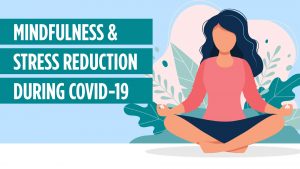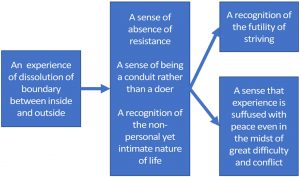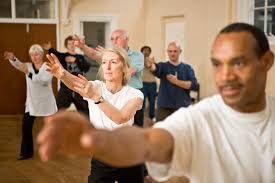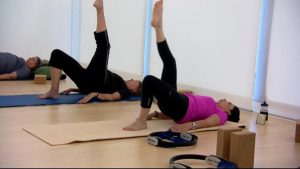Reduce Performance Anxiety in Student Vocalists with Mindfulness
By John M. de Castro, Ph.D.
“Mindfulness can really help you to stop worrying. While you can’t remove each and every stressor from your daily life, there are definitely steps you can try to feel more at ease with your performances.” – Petra Raspel
It is a common human phenomenon that being in a social situation can be stressful and anxiety producing. This includes the anxiety that occurs with artistic performance. Most people can deal with the anxiety and can become quite comfortable. But many do not cope well and the anxiety is overwhelming, interfering with the ability to perform. Anxiety disorders have generally been treated with drugs. But there are considerable side effects and these drugs are often abused. There are a number of psychological therapies for anxiety. But, about 45% of the patients treated do not respond to the therapy. So, there is a need to develop alternative treatments. Recently, it has been found that mindfulness training can be effective for anxiety disorders.
A therapeutic technique that contains mindfulness training and Cognitive Behavioral Therapy (CBT) is Acceptance and Commitment Therapy (ACT). It focuses on the individual’s thoughts, feelings, and behavior and how they interact to impact their psychological and physical well-being. It then works to change thinking to alter the interaction and produce greater life satisfaction. ACT employs mindfulness practices to increase awareness and develop an attitude of acceptance and compassion in the presence of painful thoughts and feelings. ACT teaches individuals to “just notice”, accept and embrace private experiences and focus on behavioral responses that produce more desirable outcomes. It is not known whether ACT may be effective in reducing artistic performance anxiety.
In today’s Research News article “Examining a Group Acceptance and Commitment Therapy Intervention for Music Performance Anxiety in Student Vocalists.” (See summary below or view the full text of the study at: https://www.ncbi.nlm.nih.gov/pmc/articles/PMC7272702/ ) Clarke and colleagues recruited student vocalists who demonstrated performance anxiety and provided them with a six session group program of Acceptance and Commitment Therapy (ACT). Before and after ACT and 3 months later they were measured for music performance anxiety psychological flexibility, anxiety, depression, perceived stress, and well-being.
They found that after therapy there were significant reductions in music performance anxiety and psychological inflexibility and significant increases in psychological flexibility and well-being that were maintained 3 months later. Hence, Acceptance and Commitment Therapy (ACT) produced a significant improvement in the psychological well-being of student vocalists who suffered from music performance anxiety. Although not measured, these results would suggest that their vocal performances would improve.
This was a small pilot study without a control, comparison, condition. So, great caution must be exercised in interpreting the results. The study though makes a convincing case that a larger randomized control trial should be conducted. Mindfulness training has been shown in prior research to reduce anxiety in clinical and non-clinical populations. So, the reductions in music performance anxiety observed in the present study were not surprising and probably due to the mindfulness training delivered in ACT.
So, reduce performance anxiety in student vocalists with mindfulness.
“Qualitative results showed benefits of daily mindfulness exercises on breathing, micro-muscular awareness, vocal tone, text communication and problem solving.” – Petra Raspel
CMCS – Center for Mindfulness and Contemplative Studies
This and other Contemplative Studies posts are also available on Google+ https://plus.google.com/106784388191201299496/posts and on Twitter @MindfulResearch
Study Summary
Clarke, L. K., Osborne, M. S., & Baranoff, J. A. (2020). Examining a Group Acceptance and Commitment Therapy Intervention for Music Performance Anxiety in Student Vocalists. Frontiers in psychology, 11, 1127. https://doi.org/10.3389/fpsyg.2020.01127
Abstract
Music performance anxiety (MPA) is a distressing and persistent anxious apprehension related to musical performance. The experience of MPA forces many musicians to give up performing or develop maladaptive coping mechanisms (e.g., avoidance or substance use), which can impact their career and wellbeing. High levels of MPA in students and vocalists are reported in the literature. Vocalists present a unique challenge for clinicians in that vocal and breathing mechanisms, required for performance, are negatively impacted when anxious. Acceptance and commitment therapy (ACT) has demonstrated efficacy for the treatment of a range of psychological problems including social anxiety disorder (of which MPA may be indicated as a subtype). This study sought to investigate whether group-based ACT may be a feasible and effective intervention for MPA in Australian student vocalists and aimed to design an intervention that could be adopted by music education providers. Potential participants (N = 31) completed an online survey including demographic questions and outcome measures. Six vocal students (four females; two males; aged M = 20.33 years) with elevated MPA scores participated in the ACT for MPA group program and 3-month follow-up. Group sessions were 2 h each week for six consecutive weeks. Participants were followed up 3 months post-intervention via online survey. There was a significant increase in psychological flexibility and significant decreases in MPA and psychological inflexibility. Gains were maintained at 3-month follow-up. The current study offers preliminary evidence for the feasibility and effectiveness of a group-based ACT protocol for musicians with performance anxiety which may be incorporated into tertiary performance training curricula.
https://www.ncbi.nlm.nih.gov/pmc/articles/PMC7272702/









